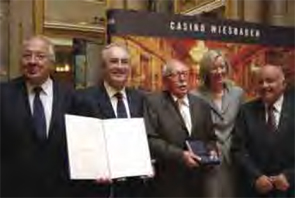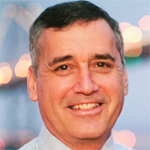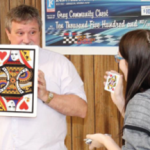Pierre Miossec, MD, of the department of immunology and rheumatology at the Hospital Eduoard Herriot and professor of clinical immunology of Claude Bernard University, both in Lyon, France, was awarded the Carol Nachman Prize for Rheumatology this May in Wiesbaden, Germany. The award promotes clinical, therapeutic, and experimental studies in rheumatology and is the highest international honor for rheumatology research. Dr. Miossec, a long-time researcher of the role of cytokines in rheumatoid arthritis (RA), was honored for his discoveries of the functions of the T cell–derived cytokine interleukin-17 (IL-17) in this inflammatory disease.

Dr. Miossec’s discovery of IL-17 as a central player in RA was the result of his extensive research in cytokines, beginning over two decades ago at the University of Texas in Dallas. There, as a fellow under Morris Ziff, PhD, MD, he helped pioneer the studies of cytokines in RA. The process of discovering IL-17, Dr. Miossec explained, evolved through the discovery and evaluation of other cytokines. It was not until 1995, when Dr. Miossec developed a relationship with Schering-Plough, a drug company outside of Lyon, that he discovered IL-17’s involvement in RA. He tested new cytokines on the synoviocytes in T cells from arthritis patients and found the first link between IL-17 and inflammation.
Dr. Miossec says that the question of whether or not T cells contribute to the pathogenesis of RA was a political debate “between me and my good friend, Gary Firestein. Gary was saying there was no contribution of T cells in rheumatoid arthritis … I was saying ‘yes.’ ’’
Although several arguments presented in the early 1990s and later recorded in 1998 in T Cells in Arthritis1, a book edited by Dr. Miossec and his two colleagues, Dr. Gary Firestein and Wim van den Berg, PhD, proposed that T cells could accumulate in the synovium of patients with RA but not play a role in the pathogenesis of the disease, Dr. Miossec persistently researched the link between IL-17 and RA. “What was important for me was to follow in the tracks of Morris Ziff,” he notes. “By showing that IL-17 was there and by knowing that IL-17 was produced by T cells,” Dr. Miossec says, “it was sort of a way, maybe indirect, but a way to show that there was a contribution of T cells.”
Since then, Dr. Miossec and colleagues have extended their discoveries of IL-17’s involvement in RA. In 1996, samples from biopsies of RA synovium were shown to produce bioactive IL-17. In 2003, the effects of IL-12, with or without IL-18, on IFN-γ and IL-17 showed that IFN-γ is a central player in inflammation and IL-17 is a central player in destruction. Further, in 2005, Th17 cells were officially defined. “Today, I would say that things have been clarified,” Dr. Miossec states, “because we use, already, drugs to target T cells in rheumatoid arthritis.” One such drug is CTLA4-Ig (Orencia).


